Is England Finally Sorting Out the Basketball Facility Conundrum?
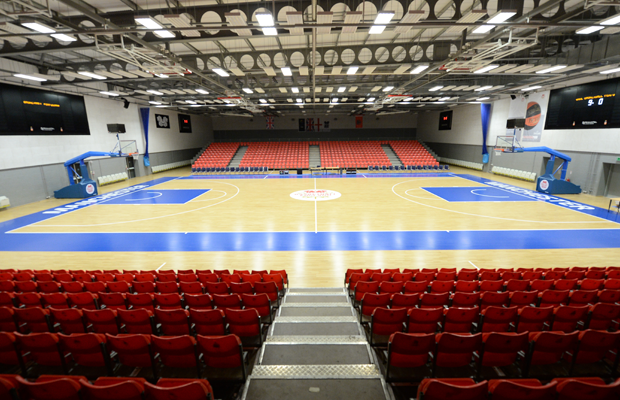
Perhaps the most common answer you hear when someone is asked ‘What are the things holding back basketball in England?’ is lack of purpose-built basketball facilities, or access to facilities. But is England finally sorting out the facility conundrum?
Historically, the lack of tradition for indoor spectator sports in the UK causes huge problems – the decision makers in government come from traditional sports backgrounds (football, rugby & cricket), so the answer is always to make indoor facilities multi-sport.
This leaves basketball fighting with, amongst other things, badminton, 5-a-side football and whatever other activities can take place in an indoor sports hall (leading to ridiculous situations where multiple basketball courts across the country look like a London tube map).
With Basketball England having no capital funding, the onus for facilities grants falls on Sport England – who, with a remit on increasing overall sports participation – tend to focus on multi-use indoor facilities.
Not only that, but these things are not easy and certainly don’t come cheap.
Raising capital, finding land, receiving planning permission, and grant funding support are just some of the barriers, not to mention that a 2,000 seat three-court community arena build starts at £2-3million for the build-cost alone.
But why are facilities so important?
“Can you imagine developing football, rugby or cricket without the availability of pitches/clubhouses/bar for these in every town and village?,” asked Leicester Riders’ Kevin Routledge, who headed up the Riders’ own facility project.
“Imagine if the only way you could play rugby was by booking a council facility which was multi-use and could cost anywhere up to £150 per hour and then take account that in our sport (basketball) you have additional overheads of 2 refs and 2 table officials, which neither local football or rugby has!
“With dedicated facilities, aspiring players of whatever level know where they can go and play, and you can provide the competitive basketball much cheaper – instead of table officials and referees travelling all over for local league games, they stay and do multiple games, etc.
“Our calculations say that structured single venue 3-court facilities can provide basketball for the ordinary player at 33% to 40% of what it now costs trying to book council or school facilities scattered around. When money is tight what do you play – 5-a-side football at £3 to £5 per hour or basketball which can be double or more?
“Under one roof, the participation side of the game, the development side of the game, and the elite level can all share the same overheads, making the whole thing must more cost effective,” Routledge concluded.
With these venues, Routledge, who believes the lack of purpose built facilities is the number one thing holding the sport back, estimates basketball can double its participation base within 5 years.
Newcastle Eagles owner Paul Blake – whose own facility build is well underway – is also of the opinion that facilities is the number one thing basketball needs to reach its potential.
“If you add up match night hire, additional facility hire for community programmes, lost income in secondary spend, the cost benefit rolls into low six figure sums,” Blake responded when asked the costs for a team on hiring a facility year round for practice and games, as opposed to owning their own.
This sum represents 25-30% of the Eagles’ total turnover – Blake revealed they hire 29 facilities a week to deliver the programmes they have in place.
📷 Today club and foundation staff had a tour of the #EaglesCommunityArena site from our constructors at @esh_group to check out how our new home is progressing. pic.twitter.com/VngaSiqmLp
— Newcastle Eagles (@NewcastleEagle) June 1, 2018
Aside from saving club’s money, a facility also provides opportunity for extra income.
“At the elite level, all clubs in the UK are missing the opportunity to generate secondary spend from their home events,” Blake said.
“This also stretches to the need for a decent level of corporate offering in the venue. Effectively, club businesses can grow and become sustainable in their own managed venues. Catering income is the lifeblood of all developed club and national governing body sport in this country, whether it be Wimbledon, Lords or the local rugby clubhouse. A venue of this kind would also lend itself to other uses and more income.”
The UK has made huge strides forward on the purpose-built basketball facilities front in recent years. Historically in the past two decades or so there have been just three; Amaechi Basketball Centre in Manchester (2002) – recently rebranded to Manchester Basketball Centre, Nottingham Wildcats Arena (2001) and the lesser known Hoops Basketball Centre in Barrow-in-Furness (1998).
There is also ‘The Regal’ in South London, a court renovated by Nike in 2012, but, due to the roof being low and short baselines, it does not meet requirements to currently be used for national league games or other performance-based competitions (that is not to say that there isn’t a lot of use being had out of it, with the Black Prince Trust having a dedicated basketball strategy that reached over 15,000 people last year and numerous free sessions to provide opportunities to play).
However, in the last 6 years, we’ve seen the launch of the National Basketball Performance Centre (NBPC) in Manchester, Leeds Beckett University’s ‘The Arena’, Leicester Arena (now called Morningside Arena after securing a three-year naming rights deal), Worcester Arena, Sheffield’s GB Wheelchair Elite Training Centre, and most recently, Essex.
Meanwhile, Newcastle Eagles’ build has begun, Manchester Giants will have a new home from 2019, plans for Sheffield Sharks’ new home are well underway, whilst Bristol, Cheshire and Plymouth are all considering their options. Additionally, it has recently been revealed Sevenoaks Suns are to get a purpose-built venue at The Olympic in Swanley.
In the case of Worcester, Leicester and Newcastle, Sport England capital grants have been pivotal to delivery on each occasion. Basketball England also provided capital awards to Leeds, Worcester and Manchester (from capital funding they did have in 2008-2012), along with support and design guidance for Leicester and Newcastle. Both Sport England and Basketball England are said to be taking a progressive view and been very supportive throughout all of the projects, not just with funds but also advice.
Since the Riders’ have had their own facility, they estimate savings of around 50% when it comes to venue hire, and an increase in game-night income of 20-30% thanks to food and beverage sales.
Meanwhile, the NBPC – which still has further phases of the project to be completed, including refurbished courts and a potential accommodation block, is 100% in the black and profitable as an entity. The NBPC’s income is split into two parts; the performance element with WBBL, NBL/Jnr. NBL teams, National Teams, Regional Teams and the such-like, then the participation element which sees local residents be able to enjoy the facility – this includes the ‘Shoot Some Hoops’ initiative that allows anyone to book a ring (the NBPC boasts 18 dropdown hoops) and a ball at the very reasonable rate of £1 an hour during certain time periods.
“We’re fortunate we have a progressive City Council and its outlook to sport but I think it’s a model that can work,” Jeff Jones, one of the main drivers of the Manchester facility said. “Any time you build a plus 1 on a two court facility so it’s 3 or 4 court, it’s pure profit within a 2-3 year period if you run it properly and diligently.
“It’s just a model that needs to be implemented across the country and we’ll get to where we all think the sport should be from a participation level, talent pool level and performance level. There’s no doubt the talent has always been there it’s just giving them opportunities to play.”
There have also been some more innovative projects; London Thunder have a converted warehouse which has been turned into two courts with spectator seating, in similar vein to the Milton Keynes Lions in the early 2010s whilst they were looking for a home.
London Thunder founder and Director Steve Bucknall believes without the facility his club would not have been able to grow like it has, now boasting a CVL and teams from Under-12 through to Senior men and women, along with a wheelchair basketball side.
“We wouldn’t have been able to expand at the rate we have without the venue,” Bucknall said. “And it’s not just expansion; having the classroom and the 24/7 access has enabled us to make reciprocal international links in a way that would have been almost impossible if we were still having to work from rented spaces, especially given the increased costs of those in recent years.
“Of course, it’s unlikely to add up if we had to include the costs of commercial rents, but the point would really be that where there are empty spaces, these should be utilised for the good of the community even if it’s for a limited length of time. There is no reason why that couldn’t work as a model.”
And how far is London from getting its own purpose built arena style venue? Jones believes it will happen eventually.
“I think London is close,” he said. “The pre-cursor to London has always been land cost. I’ve been involved with this for 40+ years, and there’s ways and means, whether it’s through education, brownfield sites, but definitely, London is a totally different animal.
“I think it’s all feasible, it’s just how and where – and the will. It’s hard bloody work – you need someone on the ground that is going to drive it forward.”
Basketball England’s Senior Manager responsible for facilities, Pete Griffiths, is the man from the federation perspective helping to make these projects happen and also thinks there is a change in the cultural attitude to basketball needed.
“It’s not just new facilities that are needed; leisure centre operator and architects attitudes towards the game need changing to ensure players have better access to the gyms that already exist or are being built,” he told Hoopsfix.
“We’re working with Sport England and facilities consultancy 4Global to develop a 10 year facilities plan for the sport.
“We’ve been in consultation with stakeholders like Great Britain Basketball and the BBL to understand their facility needs at each level of the game, be it for training or games and we’ve undertaken an audit of existing indoor and outdoor courts to understand exactly what we have and where the gaps are. The plan will also include addressing the needs for outdoor basketball, which is long overdue.
“We’re also reviewing and improving the technical guidance we use for facility development so the new guidance will be up to date and cover all areas of the game. Whether it’s an outdoor half court project through to a 3 court indoor hall, we will have improved information on the development of a project and the technical specifications for each element, including flooring, line marking, lighting, basket type, scoring, storage, changing rooms; the list is long!
“Getting this information into architects and project managers hands is key to developing better facilities. All too often facilities are built and once complete its realised the space is unsuitable for a certain level or type of basketball to be played there. Having worked on multiple indoor and outdoor projects we’re well placed to advise and help, from technical specifications to guidance so I’d encourage anyone developing a project or considering one to get in touch with Basketball England.
“Involvement at the earliest stage of a project so we can have input during the design phase is the key to creating facilities of the right standard for the game.
“It’s not just about new venues either, it’s about utilising the ones we already have and making people aware of where they can play. On the Basketball England website, there is a court finder tool that includes around 6,000 indoor courts and 3,000 outdoor courts across the country. We’ll also be building more outdoor court data this summer.”
It is not as simple as just throwing a pile of money at the problem and having venues built up and down the country; as with many things British basketball, without a strong club on the ground to operate out of it, the facility’s potential will not be maximised. After all, Barrow-in-Furness is hardly a hot-bed for hoops despite having had a dedicated venue for almost two decades.
“A strong club with a good relationship with the facility owner/operator, a good reputation, prompt payment and a plan to develop basketball in the local area is important,” he said. “Other partners and users of the facilities are also important to make projects viable and sustainable.”
The situation in Manchester has also brought attention to the fact a joined-up plan is needed; as of next year when the Giants’ new home is opened, there will be three venues within 11 miles of each other. It’s a scenario that seems to make little sense when there remain major cities like Birmingham and London without one.
Jeff Jones however, believes they all serve different purposes.
“We’re different animal to the Amaechi Centre and what the Giants are doing,” Jones said. “We’re going to service the whole community across the board. The Giants are trying to do what a Leicester have done as far as a facility and I think it’s good for basketball. The population of Greater Manchester is about 4 million now, and Manchester will be a million in a bit.
“I was fortunate enough to go to Australia for the Commonwealth Games, Townsville is 200,000 people and they have an 8000 seat facility, a community Facility with 3000 seats, a 1000 seat facility and 6 indoor courts and that’s for only 200,000 people. Are we in a chicken and egg situation? Do we need the facilities to drive participation or does the participation drive the facilities?
“We’re (the NBPC) pretty much full from 6-10 o’clock, I know Amaechi is full – it’s a different type of programme – will the Giants be able to fill their facility? I would think so.”
Additional to that, all the facilities that do exist seat around a maximum of the 2000 mark, meaning they’re too small to host major international events or could cause issues for BBL clubs who are trying to make the leap into European competition.
“There’s a gap in the market for that size of facility, certainly,” Griffiths responded when questioned about it.
“Often we have smaller facilities at around 1000-3000 seats and then it’s a big jump to arenas that hold between 10,000-20,000. It’s definitely an aspiration for GB international games and BBL games, but it’s a much larger undertaking to build that type of facility. The cost and infrastructure needs are significantly higher than say a three court 2,000 seat venue.
“The operating model would also have to be different. I think the biggest question with that size of facility would be how would we fill those seats the other 300+ days a year when it isn’t being used for international or BBL games, and what the impact on basketball would be.
“With the facilities that have opened in the past few years; Leicester Arena, Worcester Arena, National Performance Centre, Essex University along with those in the planning or building stages right now, we are starting to develop a network of quality facilities for training and games. There are cities that have the facilities and infrastructure ready to host major international basketball events. ”

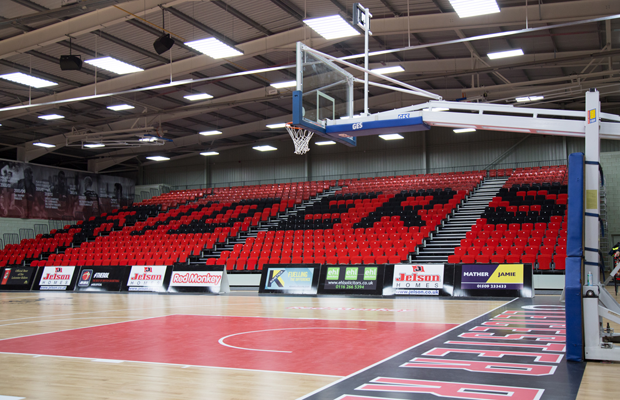
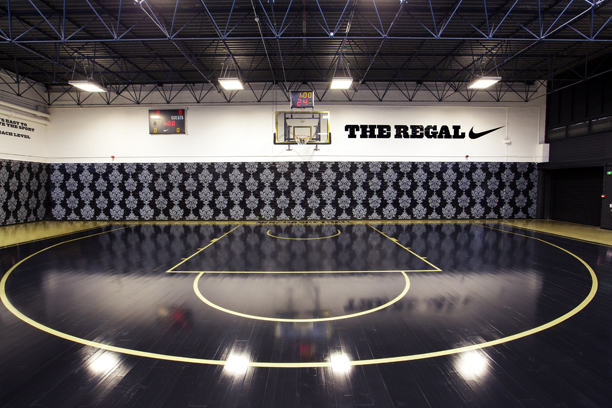

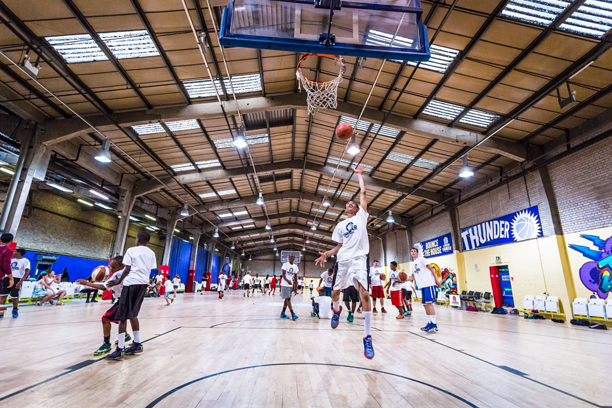
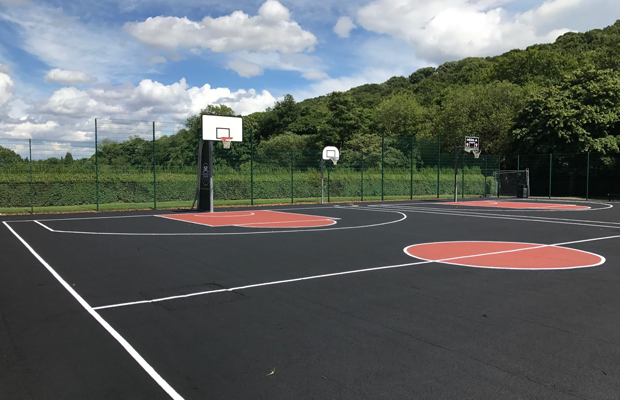





2 Comments